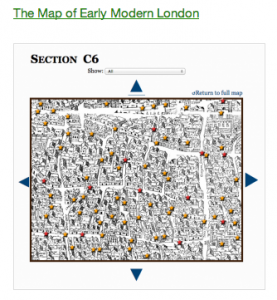The projects on the Sample DH projects link are based on a variation of artifacts. The categories are: visualization, mapping, digital edition, and network, textual and audio analysis. The categories are found on the top of the page, which makes it easy for the reader to choose the artifact they want to read about.

I will mainly be talking about the archive section. The three articles in this section are: Old Weather, Lincoln 200, andDatabase of Indigenous Peoples in North America. On the main page there are summaries listed which makes it really easy for the reader to figure out which project they want to click on and read more about.
I found the old weather project extremely interesting to view. This website enables people to view the documents of the boat they picked and then people can help with the transcriptions. The historians used the people’s work to track past ship movements and tell the stories of the people on board.

Some of the advantages to creating a digital artifact from archival documents would be that your not damaging the artifacts you are preserving them. There is easy access to the digital artifacts which is helpful to people who are unable to travel around the world for research because it is too expensive for them. Lastly, by using a digital artifact you are able to do more complex research with the access. Some of the disadvantages of creating a digital artifact from archival documents would be that there are things you can catch with the physical object that you wouldn’t be able to with the digital. There are fewer distractions with physical archives because you know you only have a certain amount of time to look at it. The idea of community opposed to an online course is another disadvantage. With a community there is an emotional connection that you wouldn’t get when you’re sitting alone looking at a digital artifact on a laptop. A long with that people tend to work better when they are working off of one another’s work.
Some challenges I might face as I build my digital humanities project may be making sure the website is easy to navigate and interesting for the viewers and making sure I’m careful while scanning the artifacts because they are very delicate and the time I have with them is precious.






